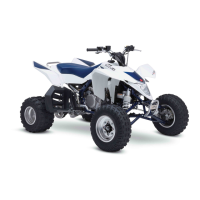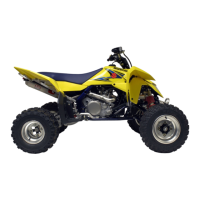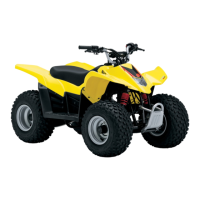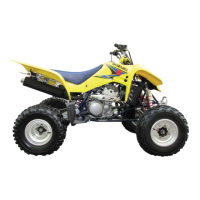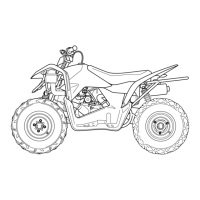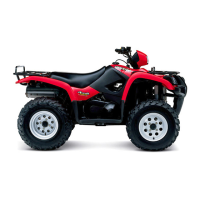*
This brake system is filled with an ethylene glycol-based DOT
4
brake fluid. Do not use mix
different types of fluid such as silicone-based or petroleum-based.
Do not use any brake fluid taken from old, used or unsealed containers. Never reuse brake
fluid
left over from the last servicing or stored for long periods.
"
When storing the brake fluid, seal the container completely and keep away from children.
When replenishing brake fluid, take care not to get dust into fluid.
'
When cleaning brake components, use fresh brake fluid. Never use cleaning solvent.
A
contaminated brake disc or brake pad reduces braking performance. Discard contaminated
pads and clean the disc with high quality brake cleaner or neutral detergent.
CAUTION/
.
-
--
~.
Handle brake fluid with care: the fluid reacts chemically wlth paint, plastics, rubber
materials
etc. and will damage them severely.
BRAKE PAD REPLACEMENT
.-.bFp-.
Flatten the lock washer
(,I,
and then slightly loosen the pad
',
.
,
-.
-2-q
mounting pins
(2).
7,
!
,
,
1
:~P
..
.,
,:I
i
I
Loosen the lock-nu!
(3
and turn out the parking brake adjuster
@I
several turns.
L
,
I
Remove the caliper mounting bolts.
(
)'
,
-..
1-1
&
Remove the brake pads by removing the pad mounting pins.
-
-
CAUTION
the pads.
Replace the brake pads as a set, otherwlse braking
performance will be adversely affected.
Install the new brake pads.
NOTE.
+
Before installing the new pads, inspect the pad mounting pins
d
;==.,
for wear.
If
excessive wear is found, replace them with new
,
.
ones.
+Be sure to loosen the parking brake adjuster before installing
the
i ads.

